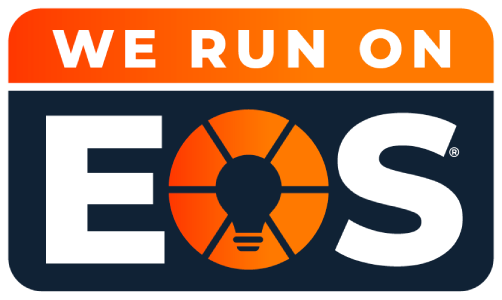The Entrepreneurial Operating System (EOS) is a comprehensive framework developed by Gino Wickman to help businesses operate more efficiently and achieve goals. EOS employs practical tools and concepts targeting six core components: vision, People, Data, Issues, Process, and Traction. It enables businesses to clarify their vision, align their teams, base decisions on data, resolve problems, streamline processes, and progress consistently.
Constructing dream teams is crucial for business success. These teams consist of motivated, skilled, and cohesive individuals who excel in communication, trust, and alignment with the company’s vision. By focusing on building these teams, businesses experience increased productivity, innovation, and performance. EOS offers the resources needed to cultivate and maintain such high-performing teams.
This article serves as both an inspiration and a practical guide for businesses on their journey to building dream teams with EOS.
Understanding the Entrepreneurial Operating System
EOS is a comprehensive framework designed to help businesses improve their performance and achieve their goals. Developed by Gino Wickman, EOS provides practical tools and concepts that address key aspects of running an organization. It aims to simplify and synchronize business processes, enabling leaders to focus on what truly matters and foster a productive, goal-oriented work environment.

Origins and Development of EOS
As an entrepreneur and business coach, Gino Wickman created EOS based on his experiences working with various companies. Observing common challenges and inefficiencies, he designed EOS to provide a systematic approach to business management. Since its inception, EOS has been adopted by thousands of organizations worldwide, praised for its simplicity, effectiveness, and transformative impact.
EOS focuses on six key components, each critical to the success of any organization:
- Vision: Clarifying and communicating the company’s long-term goals and strategic direction to ensure everyone is aligned and working towards the same objectives.
- People: Ensuring the right people are in the right roles, fostering a culture of accountability and collaboration.
- Data: Establishing a data-driven culture with clear metrics and key performance indicators (KPIs) to guide decision-making and track progress.
- Issues: Identifying and addressing problems promptly and effectively to prevent them from hindering progress.
- Process: Streamlining and documenting core processes to ensure consistency, efficiency, and scalability.
- Traction: Implementing disciplined execution and accountability practices to maintain focus and drive progress toward goals.
Implementing EOS can bring numerous benefits to a business, including:
- Improved Clarity and Focus: By defining a clear vision and strategic direction, EOS helps businesses prioritize their efforts and concentrate on what truly matters.
- Enhanced Team Alignment: EOS fosters a culture where everyone is on the same page, working towards common goals with a shared purpose.
- Better Decision-Making and Problem-Solving: With a data-driven approach and structured processes for identifying and addressing issues, businesses can make more informed decisions and resolve problems more effectively.
These benefits collectively contribute to a more cohesive, efficient, and successful organization capable of achieving its long-term goals and sustaining growth.

Success Story 1: StellarMart
Let’s consider a hypothetical company called StellarMart. It’s a large, big-box retail chain with over 200 stores nationwide. With approximately 15,000 employees, StellarMart offers a wide range of products, including groceries, electronics, clothing, and household goods. Despite its market presence, StellarMart faced significant challenges that hindered its growth and operational efficiency.
Before adopting EOS, StellarMart struggled with several issues:
- Lack of Clear Vision and Direction: The company’s leadership struggled to articulate a cohesive long-term strategy, leading to inconsistent decision-making and misaligned priorities.
- Poor Communication and Collaboration: A noticeable disconnect between corporate headquarters and individual stores resulted in fragmented communication and siloed operations.
- Operational Inefficiencies: Inefficient processes and a lack of accountability led to wasted resources and missed opportunities for improvement.
- Employee Morale and Turnover: High employee turnover and low morale were pervasive issues attributed to unclear expectations and insufficient support from management.
Recognizing the need for a comprehensive solution, StellarMart’s executive team decided to implement EOS. The initial steps included:
- Engaging an EOS Implementer: The company hired a certified EOS Implementer to guide them through the process and provide expert advice.
- Leadership Training: The leadership team underwent intensive EOS training to understand the system and its benefits.
- Setting a Clear Vision: Using the Vision/Traction Organizer (V/TO), the leadership team defined the company’s core values, long-term vision, and key goals for the next three years.
Key Tools and Processes
- Vision/Traction Organizer (V/TO): This tool helped StellarMart articulate its vision, core values, marketing strategy, and long-term goals, providing a clear roadmap for the future.
- Accountability Chart: The Accountability Chart clarified roles and responsibilities across the organization, ensuring everyone understood their specific duties and who they reported to.
- Level 10 Meetings: Regular weekly meetings were instituted at all levels to discuss progress, address issues, and maintain alignment with company goals.
- Scorecards: These helped track each department’s key performance indicators (KPIs), providing a clear and objective measure of success.
Results and Impact
The implementation of EOS led to significant improvements in team performance and cohesion:
- Enhanced Communication: The regular Level 10 Meetings and the clear structure of the Accountability Chart meant better communication and collaboration between corporate headquarters and individual stores.
- Increased Employee Engagement: With defined roles and a shared vision, employees felt more valued and understood their contributions to the company’s success, leading to higher engagement and morale.
Specific Metrics and Outcomes Achieved
StellarMart experienced notable improvements across several key metrics:
- Revenue Growth: Within the first year of implementing EOS, StellarMart saw a 15% increase in revenue, driven by more efficient operations and better customer service.
- Reduced Employee Turnover: Employee turnover decreased as the improved work environment and clear career paths boosted retention.
- Operational Efficiency: The company reduced operational costs through streamlined processes and better resource management.
- Customer Satisfaction: Customer satisfaction scores increased, reflecting the improved service and more cohesive team efforts.
By embracing EOS, StellarMart transformed its operations, aligning its team around a shared vision and achieving significant growth and success. The company’s journey demonstrates the powerful impact of a structured, disciplined approach to business management.

Success Story 2: E-Shop Emporium
Next, let’s look at a hypothetical rapidly growing online retailer. “E-Shop Emporium” specializes in unique and high-quality home goods, electronics, and fashion items. The company has a substantial digital footprint, with over 500 employees working across various departments, including marketing, customer service, logistics, and IT. Despite its growth, E-Shop Emporium faced significant operational and strategic challenges that threatened to impede its progress.
Before adopting EOS, E-Shop Emporium encountered several issues:
- Lack of Focus: The company struggled with setting and maintaining strategic priorities, leading to scattered efforts and missed opportunities.
- Ineffective Communication: There were frequent miscommunications between departments, resulting in delays and errors in order fulfillment and customer service.
- Rapid Employee Turnover: High turnover rates, particularly in customer service and logistics, impacted the company’s ability to maintain consistent service levels.
- Process Inefficiencies: Inefficient processes and a lack of standardized procedures led to increased operational costs and decreased productivity.
EOS Implementation Journey
E-Shop Emporium’s executive team decided to implement EOS to address these challenges. The initial steps included:
- Hiring an EOS Implementer: A certified EOS Implementer was brought on board to facilitate the transition and ensure adherence to EOS principles.
- Leadership Alignment: The leadership team participated in EOS training sessions to understand the system’s methodology and benefits.
- Establishing Core Values and Vision: Using EOS tools, the leadership team clarified the company’s core values and articulated a compelling vision for the future.
Key Tools and Processes Utilized
- Level 10 Meetings: Weekly Level 10 Meetings helped keep teams aligned as they discussed progress and addressed issues in a structured format.
- Rocks: Quarterly Rocks, or specific, measurable goals, were set to provide clear objectives and focus for each team and department.
- Accountability Chart: An Accountability Chart was created to define roles and responsibilities, ensuring clarity and accountability across the organization.
- Scorecards: Scorecards were implemented to track key performance indicators (KPIs), providing regular insights into the company’s performance.
Results and Impact
The implementation of EOS led to significant improvements in team performance and cohesion:
- Better Strategic Alignment: The introduction of Rocks and regular Level 10 Meetings helped align the team with the company’s strategic priorities, ensuring that everyone was working towards the same goals.
- Enhanced Communication: Improved communication structures reduced miscommunications and increased collaboration between departments.
- Employee Engagement: Clearly defined roles and regular progress reviews boosted employee morale and engagement, leading to a more motivated workforce.
E-Shop Emporium experienced notable improvements across several key metrics:
- Revenue Growth: The company saw an increase in annual revenue within the first year of implementing EOS, driven by more focused and efficient operations.
- Reduced Employee Turnover: Employee turnover rates dropped as the improved organizational structure and clear career development paths enhanced job satisfaction.
- Operational Efficiency: Implementing standardized processes and improving resource management reduced operational costs.
- Customer Satisfaction: Customer satisfaction scores increased, reflecting the enhanced service quality and quicker resolution of customer issues.
By adopting EOS, E-Shop Emporium transformed its operations, aligning its team with a clear vision and achieving significant growth and operational improvements. The company’s journey illustrates the powerful impact of EOS in creating a cohesive, efficient, and high-performing organization.
Common Themes and Best Practices
One of the most integral factors for successful EOS implementation is strong leadership commitment. Leaders must be fully invested in the process and dedicated to driving organizational change. This commitment involves adopting EOS principles and consistently modeling and reinforcing them. Leadership’s dedication sets the tone for the entire company and encourages team members to embrace the system.

Consistent Use of EOS Tools and Processes
Using EOS tools and processes ensures the organization remains aligned and focused on its goals. This includes adhering to the Vision/Traction Organizer, conducting Level 10 Meetings, maintaining Accountability Charts, and tracking progress with Scorecards. Consistent application of these tools helps embed EOS into the company’s culture and operations, making it a natural part of how the business functions.
Continuous Learning and Improvement
EOS is not a one-time implementation but a continuous journey. Successful companies regularly review and refine their processes, seek feedback, and adapt to changing circumstances. This ongoing commitment to improvement helps businesses stay agile and responsive, fostering a culture of continuous growth and development.
Clear Vision and Communication
A clear and well-communicated vision is vital for aligning the team and guiding the organization’s efforts. Success stories consistently highlight the impact of a shared vision in uniting team members around common goals. Effective communication ensures that everyone understands the vision and their role in achieving it, fostering a sense of purpose and direction.
Accountability and Transparency
Accountability and transparency are essential components of a high-performing team. Success stories often emphasize the importance of holding team members accountable for their responsibilities and maintaining open communication channels. This creates a culture of trust and reliability, where everyone is committed to their roles and the organization’s success.
Regular Meetings and Feedback Loops
Regular meetings and feedback loops are crucial for maintaining momentum and ensuring continuous improvement. Practices such as weekly Level 10 Meetings provide a structured forum for discussing progress, identifying issues, and making decisions. Consistent feedback loops allow teams to address challenges promptly, celebrate successes, and stay aligned with their goals. These practices help keep the organization on track and foster a culture of collaboration and responsiveness.

Conclusion
The Entrepreneurial Operating System (EOS) is a powerful framework for businesses to achieve operational excellence and build highly effective teams. EOS helps to overcome business challenges, streamline operations, and foster team unity. Its key benefits include improved clarity, alignment, decision-making, and problem-solving, enhancing business performance and culture.
EOS can be transformative for businesses facing obstacles like “StellarMart” and “E-Shop Emporium.” It creates structured environments with aligned goals, accountability, transparency, and a culture of continuous improvement. It equips companies with the tools for building high-performing teams and fostering productivity and innovation.
Implementing EOS can be pivotal for businesses aiming to improve operations and team dynamics. Its impact on performance and culture is substantial, providing a roadmap to meet organizational goals. Leaders should consider working with a certified EOS Implementer and embracing EOS principles to realize their full potential and ensure enduring success.
Ready to find the right talent for your organization? Reach out to us today and get started!


Reader Interactions